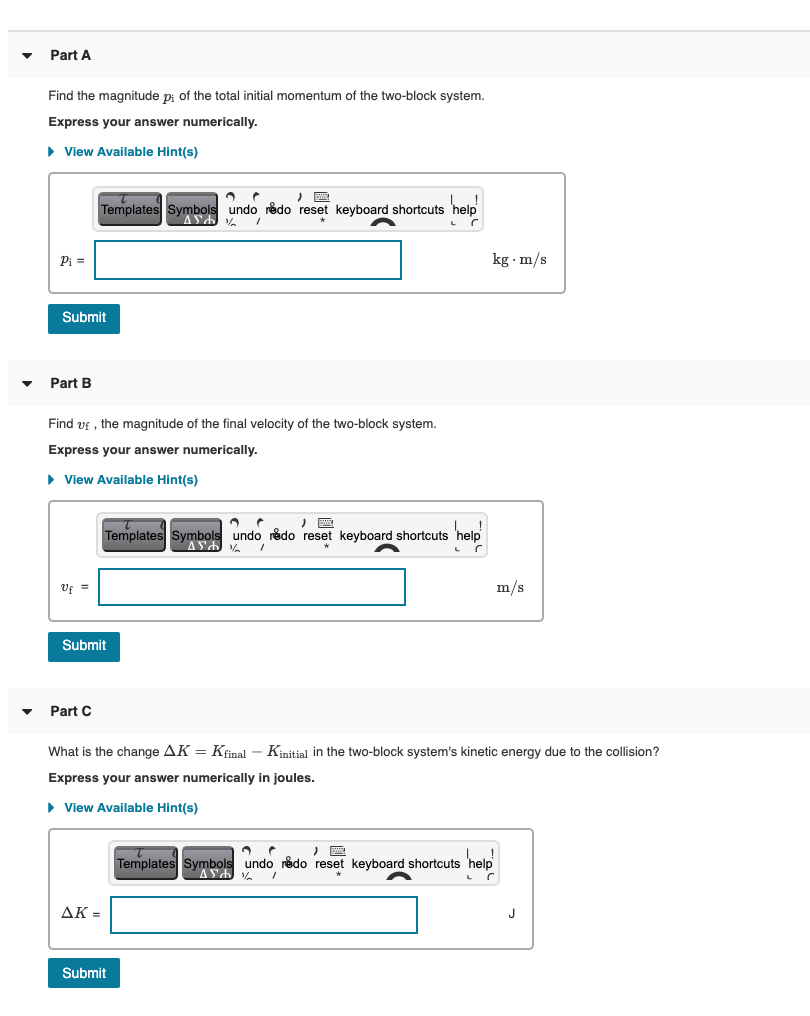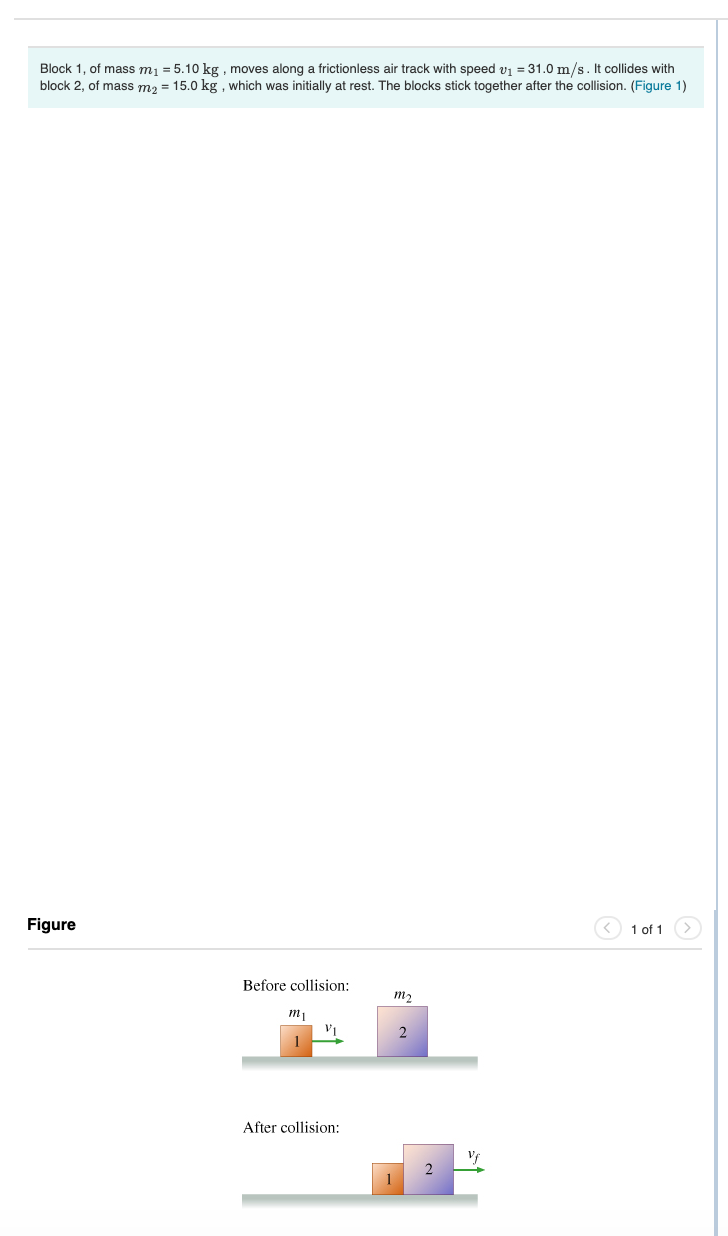Block 1, of mass m1 = 5.10 kg , moves along a frictionless air track with speed vi = 31.0 m/s. It collides with block 2, of mass m2 = 15.0 kg , which was initially at rest. The blocks stick together after the collision. (Figure 1)
Block 1, of mass m1 = 5.10 kg , moves along a frictionless air track with speed vi = 31.0 m/s. It collides with block 2, of mass m2 = 15.0 kg , which was initially at rest. The blocks stick together after the collision. (Figure 1)
Principles of Physics: A Calculus-Based Text
5th Edition
ISBN:9781133104261
Author:Raymond A. Serway, John W. Jewett
Publisher:Raymond A. Serway, John W. Jewett
Chapter8: Momentum And Collisions
Section: Chapter Questions
Problem 23P
Related questions
Question
Can i get help with these problems

Transcribed Image Text:Part A
Find the magnitude p; of the total initial momentum of the two-block system.
Express your answer numerically.
• View Available Hint(s)
Templates Symbols undo redo reset keyboard shortcuts 'help
Pi =
kg · m/s
Submit
Part B
Find vf , the magnitude of the final velocity of the two-block system.
Express your answer numerically.
• View Available Hint(s)
Templates Symbols undo redo reset keyboard shortcuts
Vf =
m/s
Submit
Part C
What is the change AK = Kfinal - Kinitial in the two-block system's kinetic energy due to the collision?
Express your answer numerically in joules.
• View Available Hint(s)
Templates Symbols
undo rådo reset keyboard shortcuts
AK =
J
Submit

Transcribed Image Text:Block 1, of mass mj = 5.10 kg , moves along a frictionless air track with speed vj = 31.0 m/s. It collides with
block 2, of mass m2 = 15.0 kg , which was initially at rest. The blocks stick together after the collision. (Figure 1)
Figure
1 of 1
Before collision:
m2
V1
1
2
After collision:
2
Expert Solution
This question has been solved!
Explore an expertly crafted, step-by-step solution for a thorough understanding of key concepts.
This is a popular solution!
Trending now
This is a popular solution!
Step by step
Solved in 2 steps with 2 images

Knowledge Booster
Learn more about
Need a deep-dive on the concept behind this application? Look no further. Learn more about this topic, physics and related others by exploring similar questions and additional content below.Recommended textbooks for you

Principles of Physics: A Calculus-Based Text
Physics
ISBN:
9781133104261
Author:
Raymond A. Serway, John W. Jewett
Publisher:
Cengage Learning

College Physics
Physics
ISBN:
9781285737027
Author:
Raymond A. Serway, Chris Vuille
Publisher:
Cengage Learning

College Physics
Physics
ISBN:
9781305952300
Author:
Raymond A. Serway, Chris Vuille
Publisher:
Cengage Learning

Principles of Physics: A Calculus-Based Text
Physics
ISBN:
9781133104261
Author:
Raymond A. Serway, John W. Jewett
Publisher:
Cengage Learning

College Physics
Physics
ISBN:
9781285737027
Author:
Raymond A. Serway, Chris Vuille
Publisher:
Cengage Learning

College Physics
Physics
ISBN:
9781305952300
Author:
Raymond A. Serway, Chris Vuille
Publisher:
Cengage Learning

Physics for Scientists and Engineers: Foundations…
Physics
ISBN:
9781133939146
Author:
Katz, Debora M.
Publisher:
Cengage Learning

Physics for Scientists and Engineers
Physics
ISBN:
9781337553278
Author:
Raymond A. Serway, John W. Jewett
Publisher:
Cengage Learning

Physics for Scientists and Engineers with Modern …
Physics
ISBN:
9781337553292
Author:
Raymond A. Serway, John W. Jewett
Publisher:
Cengage Learning